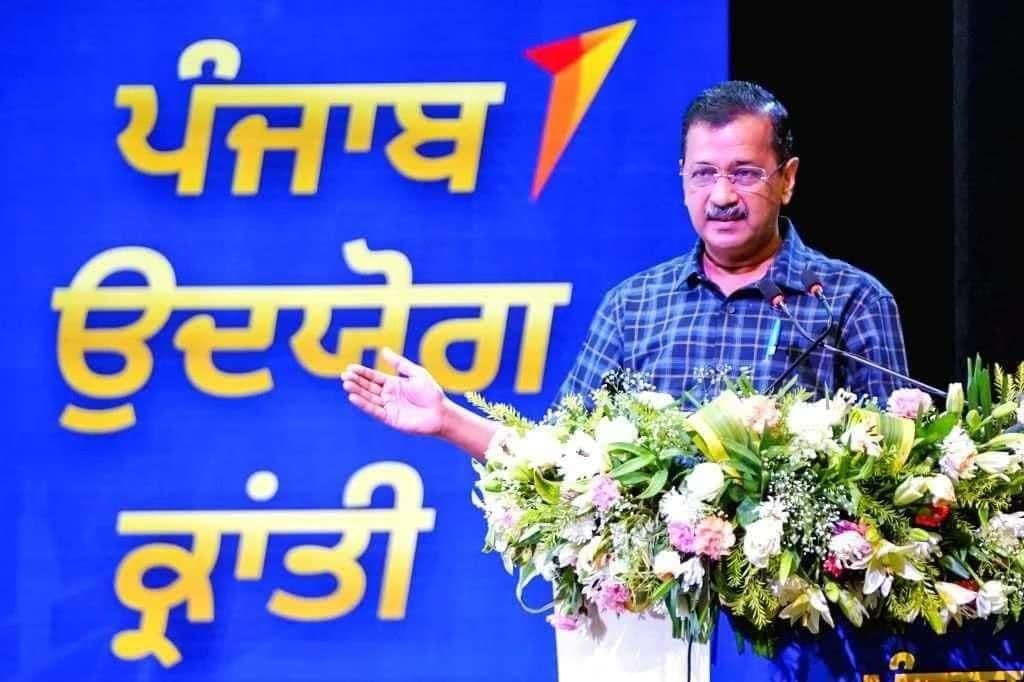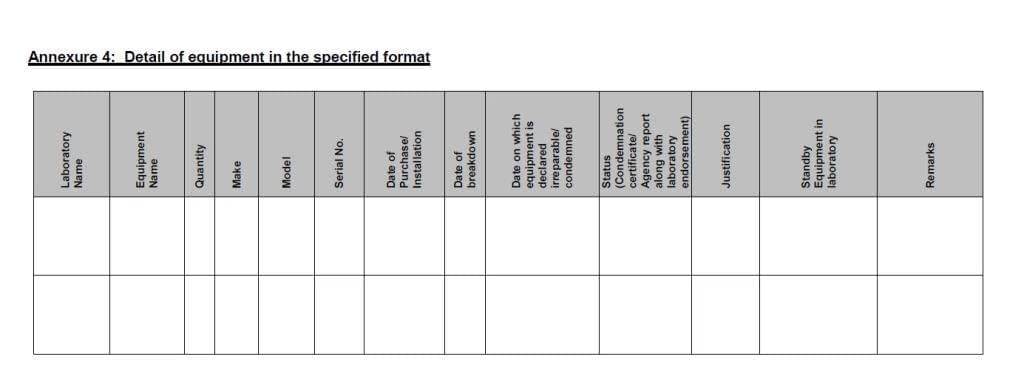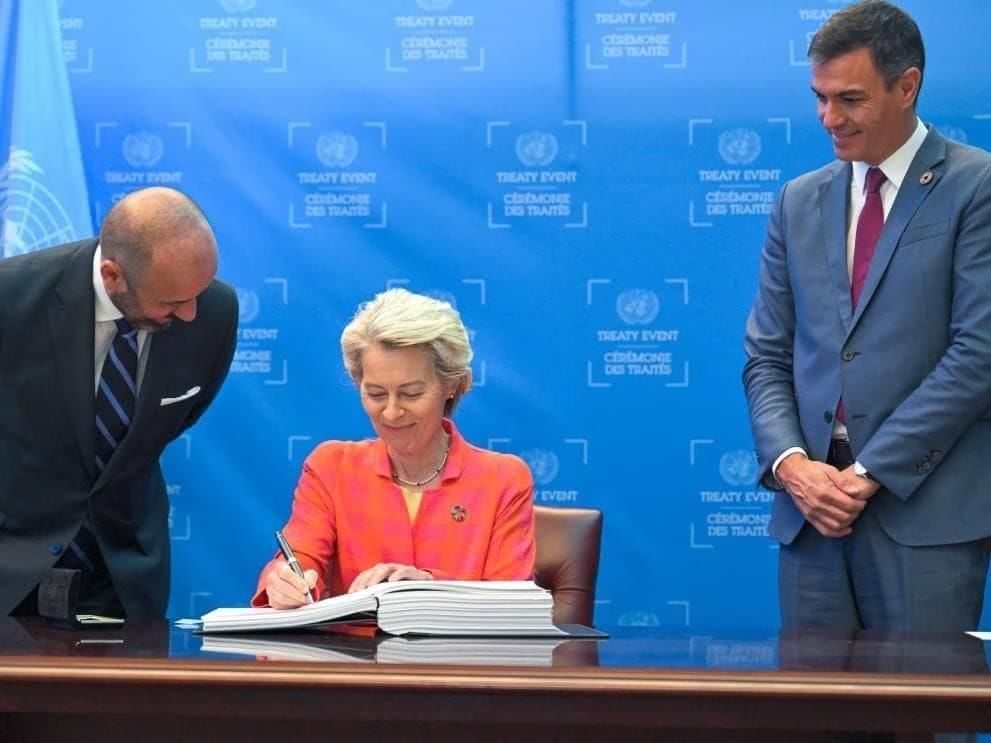Weekly Current Affairs (15th to 21st June 2025) | General Test Preparation for CUET UG - CUET Commerce PDF Download
Punjab Udyog Kranti
 Why in News?
Why in News?
- The government of Punjab has launched the Punjab Udyog Kranti programme, heralded as the first comprehensive industrial revolution in India. This initiative is designed to simplify and expedite the process of establishing industries within the state.
Key Takeaways
- The initiative introduces a deemed approval system for faster clearances.
- The Fast-track Punjab portal serves as a single window for all investor approvals.
- A self-certification system is being implemented for building plan approvals.
- Unique colour-coded stamp papers are now available for entrepreneurs.
- The government aims to create a culture of ease in doing business.
- Other states are interested in replicating Punjab's successful initiatives.
Additional Details
- Deemed Approval System: Guarantees all necessary approvals within 45 working days, significantly reducing previous wait times of 60 to 120 days. Applications will be reviewed online within seven days to expedite the process.
- Fast-track Punjab Portal: This portal provides a streamlined approach for investors. If no decision is rendered within the specified time frame, it automatically generates an approval, ensuring legal validity and enhancing accountability.
- Self-Certification System: This new system allows investors to simplify compliance for building plan approvals, reducing the time and costs associated with previous multiple expert approvals.
- Colour-Coded Stamp Papers: A novel approach that enables entrepreneurs to obtain necessary clearances using a single stamp paper, significantly cutting down the setup time for new units.
- The Punjab government is committed to fostering an environment where industrialists can operate smoothly without harassment, thus promoting employment and economic growth.
In conclusion, the Punjab Udyog Kranti initiative represents a significant step towards enhancing industrial governance in Punjab. The reforms introduced are expected to attract new investments and facilitate a more efficient business environment.
Delhi HC Guidelines on Medical Termination of Pregnancy
Why in News?
- The Delhi High Court has introduced new guidelines to enhance the management of Medical Termination of Pregnancy (MTP) cases involving survivors of sexual assault. This decision was prompted by a troubling incident where a minor rape survivor experienced significant delays in receiving critical medical care due to administrative errors and miscommunication. The court's intervention seeks to ensure that timely and appropriate medical responses are provided in such sensitive cases.
Key Takeaways
- The court emphasized that identity verification should not delay medical examinations for sexual assault survivors.
- Hospitals must conduct immediate medical examinations for any pregnant rape survivor, with specific protocols for those exceeding 24 weeks gestation.
Additional Details
- Updated Hospital Protocols: Hospitals are required to make the updated Standard Operating Procedures related to MTP readily available in Emergency and Gynaecology Departments. Duty doctors must also undergo regular training regarding their responsibilities under the MTP Act and the Protection of Children from Sexual Offences (POCSO) Act.
- The Delhi Police will ensure that officers handling POCSO and sexual assault cases receive mandatory training every six months on MTP procedures, emphasizing the need for prompt presentation of survivors to medical facilities.
- Previously, in April 2025, guidelines were issued to expedite cases involving minors with gestational ages over 24 weeks, requiring immediate notification to the Delhi High Court Legal Services Committee upon hospital referral.
- Importance of Consent: Consent for MTP must be obtained from the survivor or her guardian in a language they understand, ensuring that all parties are fully informed and comfortable with the procedure.
These guidelines reflect the court's commitment to protecting the rights of sexual assault survivors and ensuring they receive the necessary medical care without unnecessary delays.
Quantum Secure Communication

Why in News?
- Recent advancements in quantum secure communication represent a significant milestone in securing data transmission. The Defence Research and Development Organisation (DRDO) in collaboration with the Indian Institute of Technology (IIT) Delhi has successfully tested this technology over a free-space optical link. This breakthrough has the potential to transform secure communications, especially in military and national security contexts.
Key Takeaways
- Quantum secure communication is immune to hacking and utilizes principles of quantum physics.
- The recent test achieved a secure key rate of approximately 240 bits per second.
- It showcases the potential for practical applications in military and national security.
Additional Details
- Quantum Secure Communication: This method employs the principles of quantum physics, particularly quantum entanglement, to transmit information securely. Any attempt to intercept the communication alters the quantum state, alerting both the sender and receiver.
- Quantum Key Distribution (QKD): The mechanism involves using entangled photons to transmit a secure quantum key. If eavesdropping occurs, the quantum state disturbance serves as a warning for both parties.
- The recent test demonstrated a successful transmission over a distance of over one kilometer, highlighting its practical applicability.
This innovative communication technology has broad applications, including facilitating long-distance QKD and securing data transmission. Unlike traditional fibre-optic systems, free-space QKD is more accessible due to its low infrastructure costs. The emergence of quantum-encrypted networks is expected to significantly enhance cybersecurity, protecting sensitive data across various sectors such as finance, healthcare, and government. The implications for military communication are profound, as improved secure systems can bolster national security by safeguarding sensitive information from increasingly sophisticated cyber threats.
India-Cyprus Relations
Why in News?
- On June 17, 2025, Prime Minister Narendra Modi was awarded the Grand Cross of the Order of Makarios III by Cyprus, the highest civilian honour from the country. This recognition reflects the strong diplomatic ties between India and Cyprus, with Modi dedicating the award to the friendship shared by the two nations and emphasizing the importance of enhancing bilateral relations for mutual benefit.
Key Takeaways
- Prime Minister Modi received the Grand Cross of the Order of Makarios III from Cyprus.
- The award highlights the robust relationship between India and Cyprus.
- Modi's visit aims to strengthen economic, technological, and cultural ties.
Additional Details
- Historical Context of Cyprus: Cyprus, located in the eastern Mediterranean, gained its independence from British rule in 1960. It has a tumultuous history influenced by Greek and Turkish communities, leading to the division of the island following a coup in 1974.
- Significance of the Award: The Grand Cross is named after the first president of Cyprus and is awarded for significant contributions to the nation. Modi's receipt of this award underscores India's increasing diplomatic stature and Cyprus's acknowledgment of India's role on the global stage.
- Economic Ties: India and Cyprus are working to bolster trade and investment, with discussions focusing on innovation and technology. Cyprus acts as a gateway for India to European markets, further facilitated by initiatives like the India-Middle East-Europe Economic Corridor (IMEC).
- Geopolitical Importance: Cyprus's strategic location is crucial for regional politics, acting as a bridge between Europe and the Middle East, which is vital for India's trade aspirations.
- Challenges: Despite strong ties, issues such as Cyprus's complicated relationship with Turkey and Turkey's support for Pakistan present diplomatic challenges for India.
- Future Prospects: The outlook for India-Cyprus relations is optimistic, with both nations eager to deepen their partnership, focusing on security, trade, and cultural exchanges.
In conclusion, the strengthening of India-Cyprus relations, as highlighted by the recent award, sets a foundation for enhanced collaboration across various sectors, paving the way for mutual growth and strategic cooperation in the future.
Nuclear Weapons Landscape in 2025
Why in News?
- The global nuclear weapons landscape in 2025 is marked by the presence of nine countries with nuclear capabilities. These include the five original nuclear powers: the United States, Russia, China, France, and the United Kingdom, all of which are signatories to the Nuclear Non-proliferation Treaty (NPT). This treaty is designed to prevent the proliferation of nuclear weapons and encourage disarmament.
Key Takeaways
- As of January 2025, Russia has the largest stockpile with 4,309 warheads, followed by the United States with 3,700.
- China possesses 600 warheads, while France and the United Kingdom have 290 and 225 respectively.
- India and Pakistan possess 180 and 170 warheads, respectively, with Israel believed to have 90 and North Korea approximately 50.
Additional Details
- Current Nuclear Arsenal Overview: The disparity in nuclear arsenals highlights regional tensions, especially between India and China.
- India and Pakistan’s Nuclear Developments: India has been expanding its arsenal since its first nuclear test in 1974, currently holding 180 warheads. Pakistan, with 170 warheads, is also enhancing its nuclear capabilities, particularly through modernized delivery systems.
- China’s Nuclear Expansion: With 600 warheads, China is actively modernizing its stockpile and developing dual-capable missiles.
- North Korea’s Nuclear Status: North Korea, which withdrew from the NPT in 2003, continues to develop its nuclear program, claiming it is for defense purposes.
- Global Nuclear Arms Control Challenges: The NPT's effectiveness is undermined by the exclusion of countries like India, Pakistan, and Israel, complicating disarmament efforts.
- Implications of Nuclear Developments: The increase in nuclear arsenals raises concerns about regional stability and the potential for conflict escalation, particularly in South Asia.
- Trends in Military Nuclear Capabilities: Countries are enhancing military nuclear capabilities, with a focus on longer-range weapons in nations like India and Pakistan.
The expansion of nuclear arsenals poses significant challenges to international security and stability, particularly as nations modernize their capabilities amidst ongoing geopolitical tensions.
International Labour Conference Adopts Landmark Biological Standards
 Why in News?
Why in News?
- The 113th International Labour Conference (ILC), which concluded on June 13, 2025, achieved a significant milestone by adopting the first international labour standards aimed at protecting workers from biological hazards. This initiative is crucial for enhancing occupational health and safety worldwide.
Key Takeaways
- The newly established Convention (C 192) provides a framework for Member States to implement policies addressing biological risks in workplaces.
- Employers are mandated to collaborate with workers to take preventive measures against biological hazards.
- The ILC proposed initiatives to improve conditions for digital platform workers, focusing on fair remuneration and social security.
- A resolution was adopted to reduce informality in the workforce, enhancing working conditions and social protection.
Additional Details
- Biological Hazards Convention: The Convention C 192 requires countries to develop policies aimed at preventing biological hazards. It emphasizes the importance of training and disseminating information about these hazards.
- Implementation Guidelines and Risk Assessment: The accompanying Recommendation advises on creating early warning systems and training for workers while defining biological hazards and exposure routes.
- The Conference also discussed the rights of digital platform workers and proposed a Convention to ensure their protection.
- Seven amendments to the Maritime Labour Convention, 2006, were approved to address violence and harassment at sea.
- Concerns were raised regarding workers' rights in Myanmar and Belarus, highlighting the need for international monitoring.
- Palestine was granted participation as a non-member observer State, reflecting its evolving status.
- The second edition of the Global Coalition for Social Justice forum aimed to drive collaborative efforts for improving workers' lives.
The adoption of these measures reflects a global commitment to enhancing worker safety and rights, setting a precedent for future international labor standards.
Operation Sindhu
 Why in News?
Why in News?
- The Government of India has initiated Operation Sindhu to evacuate Indian nationals from Iran due to escalating tensions in the region, particularly the intensifying conflict between Israel and Iran. This operation underscores the urgency of ensuring the safety of Indian citizens, especially students studying in Iran.
Key Takeaways
- Operation Sindhu was launched to facilitate the evacuation of Indian nationals from Iran.
- 110 students were successfully evacuated in the first phase of the operation.
Additional Details
- Context of Operation Sindhu: The operation arose from concerns about potential military actions by Israel against Iran, prompting the Indian government to prioritize the safety of its citizens in vulnerable situations.
- Evacuation Process: The first group of evacuees, mainly students from Jammu and Kashmir, were transported from northern Iran to Armenia and then flown to New Delhi. The Indian Embassy played a crucial role in facilitating their safe passage.
- Challenges Faced by Evacuees: Many students encountered difficulties, including injuries from airstrikes and limited access to essential services, raising concerns about communication with the Indian Embassy.
- Broader Implications: The conflict presents diplomatic challenges for India, as over 4,000 Indian nationals reside in Iran, requiring careful coordination for safe evacuations amidst complex regional relations.
- Regional Diplomatic Relations: India’s diplomatic ties with Armenia, Turkmenistan, and Iraq aided the evacuation, while relations with Turkey and Azerbaijan posed challenges to India’s strategic options.
- Future Actions: The Government of India has advised its citizens to remain in contact with the Indian Embassy and utilize emergency helplines, emphasizing the need for continuous monitoring of the situation in the region.
Operation Sindhu highlights the Indian government's commitment to safeguarding its citizens in crisis situations, ensuring their safe return amidst challenging geopolitical dynamics.
Guidelines for Disposal of Expired Drugs in India
 Why in News?
Why in News?
- The Central Drugs Standard Control Organization (CDSCO) has released new guidelines aimed at the proper disposal of expired and unused drugs. This initiative is crucial for addressing the ecological risks that arise from improper drug disposal practices.
Key Takeaways
- The guidelines were informed by a 2018 study from the All India Institute of Medical Sciences highlighting environmental hazards.
- Major disposal methods include encapsulation, inertisation, and incineration, along with a 'Flush List' for specific drugs.
- Extended Producer Responsibility (EPR) is emphasized, making manufacturers accountable for the entire lifecycle of their products.
- Consumer participation is essential for effective EPR, though the guidelines do not fully integrate it.
- Public disposal initiatives are encouraged, with examples like Kerala's nPROUD programme for drug collection.
Additional Details
- Extended Producer Responsibility (EPR): This concept holds manufacturers responsible for the safe disposal of unused medicines, requiring active consumer engagement and reverse logistics.
- Retailers, wholesalers, and manufacturers have specified responsibilities for returning and disposing of expired drugs to ensure accountability.
- Collaboration among drug regulators, pollution control boards, and municipal corporations is necessary for successful guideline implementation.
- Record-keeping and compliance verification are crucial to maintain accountability throughout the disposal process.
The successful implementation of these guidelines will play a significant role in mitigating environmental risks associated with expired medications, requiring cooperation from all stakeholders involved.
High Seas Treaty Ratified at UN Oceans Conference
 Why in News?
Why in News?
- The United Nations Oceans Conference (UNOC) recently concluded in France, marking a significant achievement in global marine conservation. The event focused on the Biodiversity Beyond National Jurisdiction (BBNJ) agreement, commonly known as the High Seas Treaty. This treaty is designed to protect oceans and establish marine-protected areas in international waters.
Key Takeaways
- The UNOC serves as a platform for nations to discuss and promote ocean conservation efforts.
- The conference aimed to address urgent marine protection needs, including preventing over-fishing and regulating deep-sea mining.
- The treaty requires 60 ratifications to become legally binding, with 56 countries having ratified it as of the conference's conclusion.
Additional Details
- BBNJ Agreement: This agreement is essential for conserving marine biodiversity, which includes the creation of marine protected areas beyond national jurisdiction and conducting environmental impact assessments.
- The BBNJ agreement also emphasizes capacity-building for developing nations to improve their governance of ocean resources.
- Challenges to Ratification: A major challenge is the equitable sharing of benefits derived from marine resources, as well as concerns from environmental groups regarding potential irreversible damage to the oceans.
Achievements from the UNOC include numerous voluntary commitments from countries, such as:
- The European Commission's pledge of 1 billion euros for ocean conservation.
- French Polynesia's initiative to create the world's largest marine protected area, spanning five million square kilometers.
- New Zealand's allocation of over $52 million for ocean governance in the Pacific.
- Germany's launch of a 100 million euro program aimed at recovering munitions from its seas.
Looking ahead, the UN aims for 70 ratifications of the BBNJ agreement by September, which would facilitate the inaugural BBNJ Conference of Parties in late 2026. The ongoing commitment from nations will be crucial for the future health of the oceans.
WHO Guidelines for Sickle Cell Disease Management
Why in News?
- The World Health Organization (WHO) has recently rolled out its first global guideline aimed at managing sickle cell disease (SCD) during pregnancy. This initiative is crucial as it addresses significant health challenges that affect both mothers and infants, particularly in regions where SCD is prevalent.
Key Takeaways
- The new guidelines are the first of their kind from WHO, focusing on SCD management during pregnancy.
- Women with SCD face increased risks during pregnancy, including maternal mortality and severe complications.
- Over 20 evidence-based recommendations are included to enhance care for pregnant women with SCD.
Additional Details
- Sickle Cell Disease: SCD is an inherited blood disorder causing red blood cells to become rigid and shaped like sickles, leading to blockages in blood vessels. Common symptoms include severe pain, anemia, and a higher risk of infections, especially prevalent in malaria-endemic regions, particularly sub-Saharan Africa.
- Risks During Pregnancy: Pregnancy increases the risk of complications for women with SCD, including a higher likelihood of maternal death compared to those without the disorder. Adverse outcomes for infants, such as stillbirth and low birth weight, are also common.
- The guidelines recommend individualized care, including essential interventions like folic acid and iron supplementation, management of pain crises, and infection prevention.
- Multidisciplinary care involving haematologists, obstetricians, midwives, and paediatricians is emphasized for comprehensive management.
- There is a pressing need for more research and clinical trials focused on SCD, especially regarding treatment safety and efficacy for pregnant and breastfeeding women.
The WHO's guidelines represent a significant step towards improving health outcomes for women with sickle cell disease during pregnancy, setting the stage for future guidelines on managing chronic diseases in maternal health.
India’s Struggle for Indigenous Aircraft Engine Development
Why in News?
- India’s aerospace sector is at a pivotal moment with the Advanced Medium Combat Aircraft (AMCA) being a potential game-changer for indigenous military aviation. However, challenges in developing reliable engines raise significant concerns about the project's success, as the country has historically relied on imported engines, which has impeded advancements in its air combat capabilities.
Key Takeaways
- India's journey in fighter aircraft development has faced numerous hurdles, particularly in engine technology.
- The Kaveri engine project, launched in 1989, aimed to create a high-performance turbofan but ultimately did not meet expectations.
- Dependency on foreign engines has led to delays and criticisms regarding India's air force readiness.
- Strategic autonomy in military aviation is crucial for national security and operational effectiveness.
Additional Details
- Historical Context: The HF-24 Marut, designed in the 1950s, was India's first fighter aircraft initiative aimed at self-reliance. Despite its innovative design, it was hindered by underpowered engines, resulting in limited production and eventual retirement.
- Kaveri Engine Project: Initiated by the Defence Research and Development Organisation (DRDO), this project aimed to develop a turbofan engine for the Light Combat Aircraft (LCA). Despite significant investments, it struggled with performance metrics, leading to its discontinuation.
- India's ongoing reliance on foreign engine supplies has raised alarms, particularly as delays in engine deliveries have affected the LCA Mk1A's operational readiness.
- Current negotiations with General Electric for local production of the F414 engine have met with challenges due to cost demands and technology sharing issues.
- Experts emphasize that India’s failure to develop advanced jet engines stems not only from technical challenges but also from a lack of long-term strategic vision in defense funding.
To enhance its military capabilities and ensure strategic independence, India must prioritize the development of indigenous engine technologies and implement structural reforms that incorporate private sector innovation alongside defense research and development.
Covid-19 Variant NB.1.8.1
 Why in News?
Why in News?
- The Covid-19 pandemic is witnessing ongoing evolution with the emergence of new variants. A recent variant, designated as NB.1.8.1 and informally known as 'Nimbus', has gained attention due to its swift transmission, particularly in regions such as China and the United States. A notable symptom associated with this variant is the 'razor blade' throat, which is characterized by intense pain during swallowing.
Key Takeaways
- The NB.1.8.1 variant is a descendant of the Omicron variant.
- WHO has classified it as a variant under monitoring as of May 23, 2025.
- The public health risk from this variant is currently assessed as low.
Additional Details
- Symptoms:Symptoms associated with the NB.1.8.1 variant are largely similar to those of other Covid-19 strains, including:
- Fever
- Cough
- Runny nose
- Tiredness
- Unique Symptom: The 'razor blade' throat symptom has been reported; however, its distinction from other symptoms remains uncertain.
- Current evidence suggests that NB.1.8.1 does not lead to more severe illness than existing variants.
- Vaccination Effectiveness: Approved Covid-19 vaccines are expected to be effective against this variant, providing protection against symptomatic and severe disease.
- Public Health Measures: Ongoing public health measures are crucial to control the virus's spread.
In India, the Indian SARS-CoV-2 Genomics Consortium (INSACOG) has reported one case of NB.1.8.1 in Tamil Nadu as of April 2025, while the JN.1 variant remains the most prevalent, accounting for over half of the samples tested. Other variants like BA.2 and new recombinant variants are also under observation.
Health officials recommend maintaining vigilance through personal protection measures such as hand washing, wearing masks in crowded settings, and safeguarding vulnerable populations. Although significant waves similar to those in previous years are not anticipated, fluctuations in case numbers may occur.
To enhance monitoring, genomic surveillance has been intensified to track the NB.1.8.1 variant and other emerging strains. The National Institute of Virology (NIV) in Pune is actively engaged in analyzing variants to assess their impact on public health.
|
164 videos|800 docs|1156 tests
|
FAQs on Weekly Current Affairs (15th to 21st June 2025) - General Test Preparation for CUET UG - CUET Commerce
| 1. What is the Punjab Udyog Kranti and its significance for entrepreneurs? |  |
| 2. What are the key guidelines established by the Delhi High Court regarding Medical Termination of Pregnancy? |  |
| 3. How does Quantum Secure Communication function and why is it important? |  |
| 4. What are the major developments in India-Cyprus relations? |  |
| 5. What are the implications of the High Seas Treaty ratified at the UN Oceans Conference? |  |
















